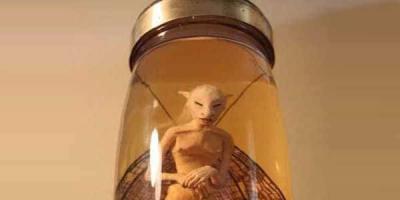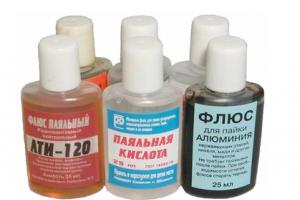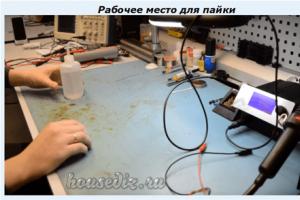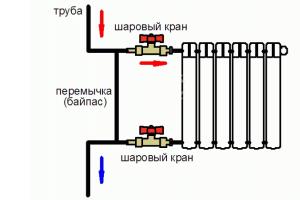The birth of a child is a very important moment, especially if it is the first experience. Young mothers are under constant stress trying to provide proper care for their baby. In the first months of life, breastfeeding is an important aspect. And then some difficulties may arise for the young mother.
One of the problems may be lactostasis in a nursing mother, which leads to blockage of the milk ducts. As a result, the milk stagnates in them, the tissues swell, pain and fever appear. Lactostasis is clearly a pathology, which is classified by ICD code 10 092.7.0.
With timely treatment, lactostasis can be eliminated quite quickly, within a few days. However, if you self-medicate or ignore symptoms, lactostasis can develop into a more serious disease.
Stagnation of milk in the milk ducts can occur for several reasons.
- When feeding the baby in the same position. As a result, the same ducts are released, and the rest of the milk remains. Thus, the milk duct becomes blocked.
- Sleeping in the same position also contributes to the development of the disease. Milk accumulates in one part of the breast, mainly under the armpits.
- Wearing tight underwear also leads to the development of milk stagnation. You should avoid tight bras or underwear with underwires that literally dig into the skin.
- A young mother should not forget about replenishing fluids in the body. Drinking enough water will prevent the milk from becoming viscous. In this case, it will be difficult for the baby to suckle and the milk ducts will become clogged.
- Quite often, the causes of lactostasis lie in trauma to the mammary gland. As a result of the impact, tissue swelling occurs and this prevents the normal outflow of breast milk.
- A common practice among women who have given birth is pumping. But the milk that remains after feeding the baby should not be expressed. This causes a constant increase in lactation. The baby simply cannot cope with this amount of nutrition, and the remaining milk causes blockage.
- Using nipples. A baby who drinks milk from a bottle using a pacifier will be reluctant to breastfeed in the future.
Previously, experts noted that the child needs to be fed once every 3 hours. The remaining milk after feeding had to be expressed. In fact, this schedule and method of feeding led to lactostasis or mastitis. To avoid such problems, it is enough to feed the baby on his demand.
At the initial stage of the disease, a nursing mother may not notice any particular deterioration in her health or other signs. However, after a few days the following signs of lactostasis appear:
- pain and burning sensation in the mammary glands
- feeling of discomfort while feeding the baby
- mammary glands may take on a different shape
- constant feeling of heaviness in the chest (stone chest)
- the appearance of red spots on the chest or its complete redness
- tissue swelling and swelling of the mammary glands
A fairly common symptom is temperature during lactostasis, which leads to general weakness of the body and chills. Usually, body temperature with this disease does not rise above 37.5 degrees. If the temperature continues to rise, this indicates the development of mastitis.
At this stage, it is important to know how to distinguish mastitis from lactostasis. As a rule, with mastitis, the symptoms of the disease appear more clearly and lead to a sharp deterioration in the woman’s well-being. The temperature with this disease is high. In order to understand that it is mastitis, experts advise measuring it not only in the armpits, but also in the groin and elbow bends.
When to see a doctor
Usually, stagnant processes in the milk ducts disappear within a few days. At this time, experts recommend feeding the baby more often. The baby can independently solve the problem of milk stagnation. Expressing during lactostasis immediately after feeding is not recommended.
If you do not feel better within 2-3 days, and the heaviness in your chest does not go away, then you should consult a doctor so that a simple disease does not develop into a more serious form. Using an ultrasound, the diagnosis will be determined and the correct treatment will be prescribed. If the treatment does not produce results, then they resort to laser removal of the seal.
Massage can be a good help with lactostasis. In the early stages, it will help get rid of unpleasant sensations and remove stagnation. It is best to do a massage after taking a relaxing shower. Before starting the procedure, you must wash your hands thoroughly and apply a rich cream or massage oil to your chest.
Rules for massage for lactostasis:
- Place your left hand under your chest and begin to gently massage with your right. Movements should be neat and soft and done clockwise. Massaging the breasts should begin from the top and gradually reach the nipple.
- Each seal must be worked out especially carefully. It is also massaged clockwise, you can knead it slightly.
- The breast in the nipple area is massaged very carefully. To prevent cracks, it is better to pre-lubricate it with a thick cream.
- Don't forget about armpit massage.
- After finishing the massage, you need to lean forward slightly and lightly shake off your breasts several times.
It is worth paying attention that sudden movements are not allowed during massage. They should be soft and not cause pain. For greater effect, lightly tapping the seals with your knuckles is allowed.
After finishing the massage, it is recommended to immediately feed the baby or express milk. Usually, a few procedures are enough for the breasts to become soft and the lumps to disappear. If this does not happen, then you need to consult a doctor who will perform this procedure professionally and express milk from the breast. 
Decanting in a medical facility
Very often we hear from young mothers about the difficulties they encounter when expressing breast milk. If you cannot do this yourself at home, the doctor will continue to strain lactostasis in the clinic. For this, special equipment is used.
Physiotherapy is also used in combination with this. It consists of exposing the area where milk stagnation and stones have occurred to ultrasonic waves. A special UHF preparation creates ultrasonic waves that promote the expansion of the milk ducts. As a result, milk does not stagnate, but is easily expressed from the breast.
Treatment of lactostasis with ultrasound will take only a few physiotherapy procedures. The full course consists of up to 10 similar procedures.
Expressing after procedures
In home treatment, the last step is to express breast milk. It is important to know how to strain milk stagnation at home. You need to express milk from breasts that are congested.
To make the process of pumping during lactostasis easier, experts recommend lightly massaging the breasts at the same time. Don't be alarmed if the milk is thick. On the contrary, this indicates that the stagnation has been resolved. After pumping, it is recommended to put the baby to the breast. This promotes complete emptying of the milk ducts.
After finishing feeding, you can apply a cooling compress to eliminate breast swelling.
Another method that is effective for stagnation of milk and a feeling like a stone in the chest is to perform physical exercises. A few simple exercises will help improve milk flow and eliminate discomfort from lactostasis in the breast.
The technique for performing the exercises is as follows.
- Your arms must be bent at the elbows. In this case, the forearms rest on a support located vertically relative to the elbows. The movements are springy towards the support and back towards the chest.
- The arm on the side where the lump is located is bent at the elbow and rested on a vertical support. With the other hand, carefully take the seal on the chest and slightly pull it down. Make springy movements towards the support and back.
All exercises should be done smoothly, without sudden movements. They should not cause discomfort to the body. These simple exercises can be used to prevent lactostasis during breastfeeding. 
Remedies for the condition
Often, young mothers resort to traditional medicine, which can significantly alleviate the condition of lactostasis. Several generations have used cabbage juice to reduce inflammation. You can also use cabbage leaves, which must be slightly mashed before use to release the juice. In this case, you need to make sure that the juice does not get on the nipple, and this does not cause digestive problems in the child.
Potatoes have a good anti-inflammatory effect against lactostasis. It is rubbed on a fine grater and applied to the chest as a compress. Magnesia compress, honey cakes, all these remedies can reduce pain during lactostasis.
Doctors also advise paying attention to ointments of plant origin. This could be Arnica ointment or Traumeel S. If you experience severe pain, when it feels like it’s shooting in your chest, you can take painkillers. Antibiotics during feeding for the treatment of lactostasis are contraindicated.
Folk remedies
Although medicine does not recommend treatment at home, often folk remedies can bring relief and even get rid of the problem. For lactostasis, you can use camphor oil. Camphor, an oil rather than alcohol, is applied to the breasts after feeding and left there for a while. 
Doctors do not recommend using alcohol compresses, which have warming properties. Milk is an ideal environment for the development of bacteria. An increase in its temperature increases their appearance many times over and leads to the appearance of purulent mastitis. Therefore, it is not recommended to use vodka compresses to treat lactostasis.
Prevention
Lactostasis in a nursing mother can be prevented by following simple rules. Prevention of lactostasis is as follows:
- Regular breastfeeding of the child.
- Feeding not according to time, but according to the child’s demand.
- Control of feeding posture during lactostasis.
- The intervals between breastfeeding should not exceed 3-4 hours.
- Avoid hypothermia of the body and chest.
- Wear the right underwear that does not compress your chest.
- Avoid stress and nervous tension.
- During breastfeeding, completely eliminate sweet, spicy, and smoked foods from your diet.
Young mothers should remember that the best preventive measure and treatment for lactostasis is regular emptying of the milk ducts in a natural way. It is better for your own child to cope with this, so when the first signs of lactostasis appear, do not transfer him to artificial feeding, but, on the contrary, put him to the breast more often.
Lumps in the breast are a common reason for visiting a mammologist. The phenomenon occurs and develops in each woman individually: during pregnancy, lactation, menstruation. But in none of the periods does the sign correspond to the norm. In 9 out of 10 cases, the clinical picture is complemented by the presence of pain and discharge from the mammary glands. The specialist differentiates and then eliminates the emerging pathology. Initially, the woman will have to undergo a full diagnosis - based on the results, the doctor will draw up a treatment program.
Why do breasts get hard?
Mastopathy is a common disease among women of any age. Elimination of this pathology takes up 50% of the practice of mammologists. Breast thickening is manifested by:
- Sebaceous gland cyst. Occurs due to blockage of the milk ducts. Significantly increases in volume after damage or increased hormonal levels. A painless, non-disturbing condition requires no treatment without aggravating consequences. In complicated cases, surgical intervention is performed: the tumor sac is removed through a minor incision in the skin. The surgical method completely eliminates the recurrence of the pathology.
- Breast cyst. Does not provoke the development of cancer, similar to the previous one (except for localization). Hard sacs with fluid can be found anywhere in the chest and are characterized by mobility under the physical influence of the fingers. Women under 50 years of age are susceptible to the disease due to high levels of hormones during the menstrual cycle. Pathology is rarely characterized by the appearance of pain. The prescribed therapy involves drainage of the cyst followed by aspiration of the contents.
- Breast lipoma. Round compaction of different sizes and locations. Sometimes several non-cancerous tumors are detected simultaneously in women with a large amount of adipose tissue.
Palpable balls in the mammary glands of girls under 16 years of age are one of the symptoms of mastopathy. Benign neoplasms occur before the onset of menstruation. The volume and arrangement of elements vary. Sometimes the presence of nodes is complemented by the appearance of dark, bloody mucous discharge from the nipples. The clinical picture indicates a high risk of tumor transformation into a malignant form.
Hard breasts during pregnancy
Swelling and increased sensitivity of the breast are natural phenomena that accompany the period of gestation. Symptoms are caused by hormonal changes in the body. If the mammary glands harden during pregnancy, this is an unfavorable sign, in 50% of cases indicating its fading. The only correct tactic is to immediately contact. It is possible that curettage of the uterine cavity will be required.
When planning the volume and nature of the intervention, the gynecologist is guided by the patient’s complaints, the results of the examination and ultrasound of the uterus.
Only in 1 case out of 50 does a woman find out about her pregnancy when the mammary glands harden.
Hard breasts after feeding
The appearance of lumps inside the mammary glands is often found among women during breastfeeding. Irregular or incomplete expression of milk contributes to blockage of the canals. Simultaneous pain, increased temperature, redness, and swelling indicate inflammatory processes. Sometimes the listed clinical manifestations indicate the initial stage of mastitis. To prevent negative consequences, you must adhere to the basic rules of lactation:
- Systematically breastfeed your baby without interruptions. If the child refuses to feed, express milk.
- Do not squeeze the mammary glands with clothing, so as not to interfere with the passage of milk through the channels. The release of milk outside of feeding is considered normal, but only in the first stages of lactation, while the body gets used to the regime.
- Choosing the right breastfeeding position. There are a lot of educational materials that can help a new mother.
Firm breasts after mammoplasty
Increased density and hardening of the breast in plastic surgery is called capsular contracture. The condition is not caused by excessive rigidity or other characteristics of the implanted material, but by the body's reaction. In certain cases, the prosthesis is regarded by the immune system as a foreign body.
The density of the gel contents gives an idea of what the breasts will feel like after surgery. A kind of protective shell is formed in the mammary glands, consisting of connective tissue and inflamed structures. They are like a capsule or a hard ball that envelops the location of the surgical intervention.
On average, it will take at least 2 months of recovery period with supportive drug therapy. Additionally, the patient should refrain from physical activity in order to:
- stop swelling;
- annihilate pain;
- restore sensitivity;
- normalize well-being.
The denser the capsules are formed, the firmer the breast becomes. The time frame for normalization of the condition of the mammary glands is individual for each individual case and the surgical intervention performed. The return of the necessary softness to the breast occurs after complete rehabilitation.
Due to the implantation of breast implants, abscess diagnosis is much less common. The condition is characterized by pain in the area of infection and is observed in any part of the breast. Inflammatory symptoms are pronounced: redness, hardening of the surface, the skin becomes hot to the touch. Treatment includes placement of drainage and a course of antibiotics.
Hard breasts after childbirth
Fat necrosis is a dangerous breast disease in which healthy breast cells mutate into round, hard tumors. The diagnosis is confirmed by a change in skin color around the tumor: the surface of the epidermis turns blue or red. There may be no pain.
The pathology is provoked by hormonal imbalance and subsequent sudden weight gain after childbirth, as well as mechanical and other damage to the breast. The consequences of the injury can appear even after several years, including the formation of scar tissue. During this period, the vital activity of fat cells undergoes significant changes that do not require special treatment.
If hardness is accompanied by pain
Acquiring a pathological character, areas of the mammary gland have varying degrees of hardening with irradiation of pain from the seals to the armpit. The condition gives false signs of osteochondrosis: only an experienced specialist can identify mastodynia. If symptoms are accompanied by discharge from the nipples, it is likely to confirm galactorrhea or a secreting mammary gland (depending on the color of the fluid). Also, hard breasts with pulling or throbbing pain are a sign of:
- Intraductal papillomas. They are palpated in the form of compacted unnatural anatomical structures. Often lead to discharge of bloody fluid from the nipples. The closer a patient approaches menopause, the more likely it is that fewer lumps will form. Diagnosis of papillomas in both glands simultaneously occurs exclusively at a young age.
- Adenomas are non-cancerous neoplasms of a round, smooth shape. They change their location and degree of hardening depending on the period of the monthly cycle and the individual characteristics of the body.
- Thrombophlebitis of the great vein. The blood vessel is localized in the armpit area. The blood clots inside it move closer to the mammary gland and manifest themselves as numerous compactions. Along the entire length of the vein with abnormal neoplasms, inflammation, redness, and elevated temperature are recorded.
- Oncological neoplasm. Involves immediate surgical intervention with complete or partial amputation of the mammary gland. A cancerous tumor is heterogeneous in its structure, easily palpable, like dense tissue that stretches directly from the skin far into the chest.
Diagnosis of the condition includes ultrasound, mammography, histological, clinical and biochemical examination. Additionally, pneumocystography and ductography will be required. After confirmation of the diagnosis, the treatment complex is supplemented with laser, magnetic, and restorative physiotherapy.
Hard nipples
Natural physiological hardening of nipples in women is due to the following factors:
- Sexual arousal.
- The body's reaction to a sharp change in temperature (often cold snap).
- Pregnancy after the 2nd trimester, when the nipples increase in size and become more sensitive.
- The premenstrual period, accompanied by emotional swings and relative breast tenderness.
If external conditions do not correspond to any of the listed points, the cause of hard nipples should be sought in their disease. Eczema or herpes is manifested by redness, swelling, rash, soreness, itching, the appearance of hard crusts on the skin, and erosions. Sometimes excessive dryness of the epidermis or damage to the mammary gland followed by a hematoma in this area is mistaken for a pathological hardening of the nipple. It is necessary to differentiate all the symptoms so that the diagnosis is based on the most accurate information.
What to do if your chest becomes stone-like
Most women experience a similar condition after childbirth or a little earlier, when colostrum is replaced by milk. In addition to the natural increase in volume, increased sensitivity, and a feeling of heaviness of the breasts, a woman reveals petrification of the mammary gland. In obstetrics, this symptom is known as breast engorgement, accompanied by nipple hardening, inelasticity and pain in the areola. Sometimes the unpleasant sensation even interferes with feeding the baby. There is a decrease in nipple prominence.
These phenomena contribute to the deterioration of milk production due to increased swelling. An additional inconvenience is that pumping is difficult. To alleviate the condition, it is necessary to improve the capacity of the ducts and reduce swelling. Simple but effective methods include:
- Frequent latching of the baby to the breast.
- Physiotherapy by Jean Cotterman (pressure softening technique).
- Adequate drinking regimen (to avoid dehydration).
- Cold therapy - applying ice cubes wrapped in a towel.
- Use cabbage leaves between feedings (until they wilt completely), previously washed with soap.
Massage techniques have become especially popular; when used correctly, swelling of the mammary gland is eliminated in almost a few days. Their implementation is paramount before the pumping procedure, which can be extremely painful and impractical for this breast condition.
Seal prevention
To avoid lumps inside the mammary glands:
- correct attachment of the baby during breastfeeding;
- full expression of both glands (even if the child is not hungry);
- protection from damage and injury (at home, at work);
- rejection of bad habits;
- prevention of hormonal disorders - proper alternation of work and rest;
- Maximum compliance with personal protective equipment when working in conditions of evaporation of chemicals.
Regular visits to the gynecologist allow you to identify pathology at an early stage of its development.
If you notice breast hardening and pain, it is recommended to immediately contact the clinic. Similar symptoms manifest not only mastopathy, but also postpartum mastitis, hypogalactia, cracked nipples. Through the joint efforts of specialists (gynecologist, mammologist, oncologist surgeon), it is possible to defeat any type of pathology, resorting to the latest diagnostic techniques.
Breast swelling and pain are the most common reasons for visiting a doctor. Unfortunately, the statistics are inexorable, and more and more older women are faced with such manifestations. Sometimes this is accompanied by a terrible illness, and sometimes by ordinary hormonal changes in the body. But young women of childbearing age are no exception. For some reasons, they also become targets for this disease. How to understand the situation, what causes chest pain, and when should you consult a specialist?
To understand when pain is considered normal and when it is pathological, you need to consider in what cases discomfort may occur.
Depending on the day of the cycle
The condition of the mammary glands is directly dependent on the hormones produced in the reproductive and thyroid glands, and the hypothalamus. Their slight swelling during the menstrual period is, in many cases, a normal condition, although sometimes it may indicate the development of unwanted diseases.
Before the onset of a woman's monthly cycle, the breasts prepare for possible pregnancy and lactation. The milk ducts grow, causing breast volume to increase and painful symptoms to appear. If these manifestations do not disappear after the end of the cycle, and some lumps are palpable, this may indicate the occurrence of pathologies.
Many ladies are interested in the question: why do the mammary glands swell and hurt. More than half of women of childbearing age experience some discomfort during the premenstrual period. But, most often, women note that their breasts hurt and swell in the second half of the menstrual cycle, and pain is felt in both mammary glands. In such cases, there is a deterioration in performance and well-being. If the intensity of the pain increases each time, you should consider visiting a doctor and undergoing an appropriate examination. 
At the end of the cycle, discomfort usually disappears. If this does not happen, it is advisable to conduct a pregnancy test. A negative test indicates its absence. Swelling and tenderness of the breasts are one of the indirect signs of pregnancy; if there is a delay, depression, or headaches, it is better to visit a doctor.
The presence of serious illness may be indicated by nipple discharge, lumps in the breast tissue, and other similar symptoms.
During pregnancy
Throughout pregnancy, as well as after childbirth, a woman experiences an increase in breast volume. This is a natural process that is associated with an increase in the amount of hormones responsible for its growth. As a rule, body temperature remains within 37 degrees during this period.
The first trimester is marked by the appearance of unpleasant sensations in the breast area; after the start of feeding, swelling and pain decrease and then disappear completely. 
After conception, a woman may experience other symptoms. These are lower back pain, a slight increase in temperature. But this is not a cause for concern if these manifestations disappear after a few days.
Well, if after childbirth the pain increases and is accompanied by fluid discharge from the nipples, then you should consult a doctor.
During lactation
Another physiological cause of mammary gland swelling may be the postpartum period and lactation. The endocrine system prepares the woman’s body for this important period, and you may notice that the mammary glands are swollen and the nipples are sore. But, these symptoms subsequently go away on their own. 
Alarming symptoms - see a doctor immediately
In some cases, to avoid serious complications, it is strongly recommended to seek the services of a qualified healthcare professional. There are several breast diseases that cannot be delayed. Timely assistance will save you from many problems. What kind of pathologies are these, and what are their symptoms?
Mastopathy
This is a benign formation that occurs due to an imbalance of female sex hormones. In the thickness of the glands, compactions are formed, located in a chaotic manner. Subsequently, they grow and cause discomfort.
Characterized by:
- slight pain in the nipples, usually before the cycle;
- unusual discharge in the form of cloudy drops that protrude when pressed;
- swelling.
There are two types of mastopathy: diffuse and fibrocystic. The first case is typical for young girls. In this case, the glands increase evenly. In the second case, formations of different shapes and sizes are observed, nodes and cavities are formed.
To establish a diagnosis, you will need to resort to ultrasound examination. A lump biopsy may also be performed to rule out more serious breast disease. To treat this disease, hormonal drugs are used, and surgery is also used. 
Lactostasis and mastitis
Typically, symptoms of lactostasis appear in women who violate breastfeeding during lactation. In other words, we can say that stagnation of milk or a large amount of milk in the breast contributes to stretching of the end sections. In these cases, they resort to either feeding or forced expression of milk.
Mastitis is formed due to stagnation of milk and subsequent inflammation due to exposure to pathogenic bacteria. They penetrate into the breast tissue through cracks in the nipple area.
Characterized by:
- increased temperature;
- severe pain in the nipples;
- bursting and dull pain in the chest, sometimes throbbing;
- swelling of the glands.
If suspicions are confirmed, breastfeeding is stopped and constant outflow is ensured using a breast pump. Drug treatment is prescribed aimed at eliminating intoxication of the body. Formed abscesses, if any, are treated surgically. 
Oncological diseases
Unfortunately, they arise as a result of women not taking their health seriously. During the development period, the disease manifests itself in various external symptoms, leading to serious consequences.
Characterized by:
- pain in the nipples for a long time;
- changing the shape of the nipples;
- enlarged lymph nodes in the armpits;
- nodules or lumps are detected in the chest;
- body temperature fluctuates between 37-38 degrees;
- loss of appetite, deterioration of health, loss of body weight.
To protect yourself, you need to periodically see a mammologist, as well as independently examine the mammary glands if your breasts are swollen and your nipples hurt, as well as for the presence of hardened crusts on them or discharge.
Other causes leading to chest pain
Drinking large amounts of liquid
As a rule, fluid is retained in the area of the glands, this leads to situations where the breasts are swollen and sore. Drinking large amounts of drinks that contain caffeine also has a detrimental effect on the condition of this area.
Wrong underwear
Wearing underwear that is too tight or wearing clothes that don't fit properly can cause pain and engorged breasts. 
Sedentary lifestyle and poor diet
Eating large amounts of salt (more than 5 grams), as well as excessive consumption of fried foods, has a detrimental effect on the condition of the entire body.
If a woman does not lead an active lifestyle, then this will soon lead not only to severely engorged breasts, but also to other unpleasant consequences.
Hormonal disorders
The cause of pain can be menopause in women over 45 years of age. Hormonal surge and imbalance lead to the appearance of these symptoms.
If necessary, painkillers are prescribed; women are advised to pay attention to proper nutrition and a healthy lifestyle.
How to relieve pain at home
There are several methods of preventive treatment if the breasts are engorged and sore. They help to prevent the disease at an early stage, relieve swelling, calm and relieve pain.
Phytotherapy
Medicinal preparations can be found at any pharmacy. It is better to prefer those that contain nettle, St. John's wort, string, celandine, dandelion, mint. Flax and soy seeds will help restore hormonal balance, but it is better to consult your doctor first. Cabbage compresses, which are applied to the painful area, will also help if the mammary gland is engorged and hurts.
Massage
An effective way to get rid of pain. You can study the technique yourself, or you can contact a specialist. 
Contrast shower and sports
A combination of cold and hot water, as well as moderate exercise, helps improve blood circulation.
Diet or diuretics
If your breasts are swollen, the cause may be fluid retention in the body; you need to take care of proper nutrition and the use of diuretics.
Rule out depressive states
The emotional background greatly influences the state of the whole organism. To protect your breasts from disease, you need to avoid stressful situations, shocks and worries.
Treatment by a doctor
If breast swelling and accompanying symptoms do not disappear, you should seek help from a doctor. Diagnosis is carried out, mammologist and gynecologist are visited, tests are taken. Based on the data obtained, treatment is prescribed. 
The examination includes the following stages:
- Ultrasound, in addition to the mammary glands, it is advisable to check the pelvic organs.
- Mammography.
- Analysis of the content of sex gland hormones in the blood.
If the condition is not advanced, massage and natural medications are prescribed.
Taking good care of your health and timely assistance is a guarantee of excellent health, activity and long life!
Video
In this video you will learn what to do to relieve pain in swollen breasts.
Most women pay enough attention to the condition of their breasts, more often to their size. But it is also necessary to remember about possible diseases of the mammary glands, which may manifest themselves with some symptoms (or not manifest themselves).
Among the main possible such symptoms are the following:
- Pain
- Discharge
- Seal
Below we will look at why lumps occur in the chest and how to behave correctly if you discover some unusual or painful formation.
Induration of the mammary glands can be associated with several factors. The reason for their appearance during lactation is due to blockage of the milk ducts. This phenomenon occurs due to incomplete or irregular emptying of the gland. If it is accompanied by fever, pain and redness of the skin, there is a possibility of mastitis, an inflammatory process in its tissue.
Some girls and teenagers experience breast tenderness and lumps (balls) before menstruation. In this case, similar areas can form, which periodically change location and size. In this case we are talking about mastopathy - a benign neoplasm. This disease is considered one of the most common in mammology. The appearance of nodes is sometimes accompanied by discharge from the nipples. If the mucus becomes bloody or brownish in color, there is a risk of developing cancer.
The appearance of a lump in the breast in women may indicate the onset of a tumor process. However, most of these neoplasms are usually benign.
REASONS FOR HARDENING OF THE MAMMY GLANDS
 Often, having discovered a lump in her mammary gland and heard from a mammologist the diagnosis of “mastopathy,” a woman does not attach much importance to it, because according to statistics, mastopathy occurs in 60-90% of women. Should I be concerned if there are lumps in the mammary gland, painful, in the form of a ball? Undoubtedly. Diseases of the mammary glands, diagnostic methods for the presence of lumps in the mammary gland and their treatment will be discussed in this article.
Often, having discovered a lump in her mammary gland and heard from a mammologist the diagnosis of “mastopathy,” a woman does not attach much importance to it, because according to statistics, mastopathy occurs in 60-90% of women. Should I be concerned if there are lumps in the mammary gland, painful, in the form of a ball? Undoubtedly. Diseases of the mammary glands, diagnostic methods for the presence of lumps in the mammary gland and their treatment will be discussed in this article.
Cysts and tumor abscesses
.jpg)
Fatty breast tumors

Neoplasms
.jpg)
Thrombus
Blood clots in the veins (thrombophlebitis) may feel like a lump in the breast. Phlebitis affects a large vein that normally crosses the chest at the armpit (axillary fossa). Symptoms include pain, redness, warmth and swelling along the path of the vein.
HAVE YOU FOUND A DENSE LOCATION IN YOUR CHEST?
Lumps in the mammary gland have a soft or denser consistency and sometimes shift. Pain from the area of lumps in the mammary gland can radiate to the armpit, which a woman often mistakes for symptoms of osteochondrosis. Along with lumps and pain in the mammary glands (mastodynia), discharge from the nipples is often white (galactorrhea), yellowish or green (secreting mammary gland).
Which doctor should a woman consult if she wants to undergo a breast examination if she has tenderness, “balls,” or lumps in the mammary gland? Both a gynecologist and a surgeon can identify the disease. But only a mammologist-oncologist will conduct the most complete examination, including, if indicated, ultrasound of the mammary glands, mammography, ductography, pneumocystography, cytological and histological examination.
Our mammologist treats not only mastopathy, but also postpartum mastitis, cracked nipples, and helps to cope with the problem of hypogalactia (insufficient milk for breastfeeding), using modern treatment methods such as magnetic therapy, laser therapy, and the latest physiotherapeutic complexes.
WHERE TO GO IN MOSCOW
If you are concerned about discharge and pain in the mammary gland, lumps or other problems, a specialist from our center will give qualified advice. In our clinic, doctor's appointments are held daily, by appointment.
The breast is made up of different tissue structures. One of them, fat, is subject to fluctuations in fluid volume. This may cause breast swelling, accompanied by increased sensitivity and pain. But there are other reasons that lead to breast swelling. We'll talk about them in the article.
Main symptoms of breast swelling
The main symptom is a visual increase in breast volume and swelling. Veins located on the chest may become more visible. There are other symptoms that accompany breast swelling. These include:- feeling of heaviness in the chest;
- tenderness or discomfort in the area around the chest and armpits;
- changes in the texture of the skin on and around the breasts.
These symptoms are not always a cause for concern, but they may be a sign of breast cancer. Therefore, they cannot be ignored.
Why do breasts swell?
There are many reasons that cause breast swelling. These include both harmless causes and dangerous ones. The most common:- premenstrual syndrome;
- pregnancy and postpartum period;
- consuming foods and drinks high in salt and caffeine;
- taking medications (for example, hormonal contraceptives);
- mastitis and milk duct infections (particularly during breastfeeding);
- fibrocystic mastopathy (benign formations in the breast);
- mammary cancer.
Breast swelling due to premenstrual syndrome
Breast tenderness and swelling often accompany premenstrual syndrome. These symptoms usually appear a week before menstruation and disappear almost immediately after it begins.Breast swelling due to premenstrual syndrome (PMS) is more of an inconvenience than a serious medical problem. But it may indicate fibrocystic disease. Women with this condition may feel it between periods. The lumps may move when you press on them, and with the onset of menstruation they usually shrink or disappear altogether.
Causes of breast swelling during PMS
An increase in estrogen and progesterone levels in the second half of the menstrual cycle can lead to increased sensitivity, swelling and tenderness in the mammary glands. Usually these symptoms disappear with age, with the onset of menopause. Read more about chest pain during menstruation -.
Medicines containing estrogens may also cause breast swelling and tenderness. These include contraceptives and medications prescribed during menopause.
While premenstrual breast swelling is harmless in most cases, it can sometimes indicate an infection or other medical condition. Be sure to consult a doctor if, in addition to swelling in your breasts, you notice:
- the appearance of many new or changes in old, benign lumps in the breast;
- nipple discharge, especially brown or bloody discharge;
- chest pain that interferes with sleep and daily life;
- unilateral lumps that appear in only one breast.

An examination by a doctor and answers to his questions will help determine the cause of breast swelling. If any pathological changes are detected, the doctor will prescribe an ultrasound of the mammary glands or mammography.
The discomfort that accompanies premenstrual breast swelling can be relieved with the help of non-steroidal anti-inflammatory drugs (Ibuprofen, Naproxen sodium, Acetaminophen). The doctor may also prescribe diuretics to relieve swelling.
Diet can also help with breast swelling associated with PMS. Discomfort increases with caffeine, alcohol, and foods high in salt and fat. Accordingly, eliminating these foods from the diet or reducing their consumption in the middle of the cycle will help relieve chest discomfort.
Other causes of breast swelling
Hormonal causes of breast swelling and tenderness also include pregnancy and menopause.
During PMS, discomfort in the chest appears in the second half of the menstrual cycle and disappears after or during menstruation, because. progesterone levels decrease. At the beginning of pregnancy, these symptoms can be mistaken for premenstrual syndrome - they usually appear in the first or second week after conception. And they continue for some time, due to an increase in progesterone levels.
In the absence of other pathological symptoms described above, breast swelling during pregnancy is considered normal. A low-salt diet will help, as will a supportive bra.
Breast swelling during menopause
As a rule, breast swelling is associated with. During menopause, hormone levels fluctuate, which causes discomfort in the chest. Also during menopause, fibrocystic changes in the tissues of the mammary glands may begin, which also cause swelling and tenderness of the breast.Hormonal causes of breast swelling can manifest as a feeling of heaviness, pain when touching the breast, as well as an increase in its size.

If these symptoms persist for a long time, you should definitely consult a doctor. He will conduct an examination, ask questions and, if necessary, refer you for additional examinations. Based on the results of the examination and examination, hormonal medications, vitamin complexes (with the obligatory content of magnesium and vitamin E), as well as a diet may be prescribed.
What will relieve discomfort in the chest during menopause:
- Reduce caffeine and salt intake. These substances can cause fluid retention, including in the chest.
- Taking vitamin E. This vitamin effectively helps with swelling and tenderness in the breasts.
- The right bra. This is the simplest and most effective way to reduce unpleasant breast sensitivity.
- Warm compresses. They will relieve soreness and swelling in the chest, especially in the evening before bed.
Pathological causes of breast swelling
Swollen breasts can also be a symptom of breast cancer. There are several types of cancer. The inflammatory type can result from blockage of the lymphatic vessels, leading to breast swelling. In this case, the skin on the chest may resemble an orange peel, and hard and painful lumps may be felt inside the breast.When to see a doctor
Hormonal breast swelling, manifested during PMS or in other cases, should not cause too serious inconvenience that interferes with leading a normal, familiar life. If the swelling is accompanied by severe pain, discuss this with your doctor.

Be sure to consult a doctor if swelling has the following symptoms:
- cracked nipples;
- changes in the color of the nipples or breast skin;
- dimples or wrinkles on the chest;
- the appearance of solid tumors in the breast tissue that do not disappear or change in size during the menstrual cycle;
- wounds on the chest that do not heal;
- nipple discharge.
Unobvious symptoms of breast cancer (video)
A mammologist talks about non-obvious symptoms of breast cancer in the early stages. Symptoms that should alert you and cause you to consult a doctor.








